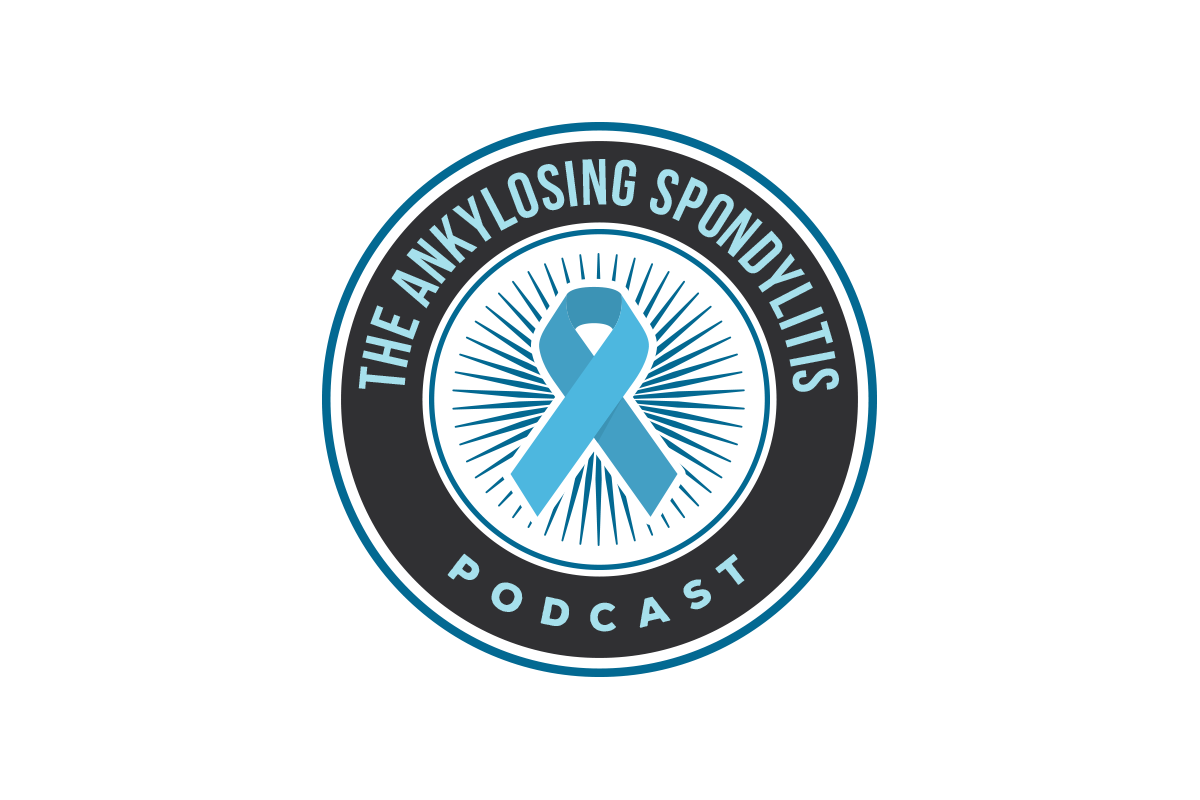Episode 58
Chiropractic Care - Basics To Consider
Hello, and welcome to this week's episode of The Ankylosing Spondylitis Podcast. This week I wanted to talk about chiropractic care. You know, that's probably one of the few topics that when brought up online will really can develop into some heated conversations about should you or should you not? And so I thought I'd take a little bit of a look at this discusson further, you know, issues around chiropractic care.
With ankylosing spondylitis, we're all just trying to alleviate as much of the pain that is associated with ankylosing spondylitis as we can. And at its basic core, you'd think that chiropractic care would make a lot of sense since it revolves around the spine, the musculoskeletal system. And you'd think, wow, that really could be a good addition to my overall care. But you have to kind of look at it in the context of how much you're fused with Ankylosing Spondylitis. Back in 2015, the American College of Rheumatology recommended against the use of any type of spinal manipulation, which is one of their tenants of how they deal with you and how they treat you. But a study done in 2016 of patients that had seen chiropractors and then were later diagnosed with ankylosing spondylitis is that it was found that that chiropractic care actually pushed them to go see, to look further into their back pain. 3300 plus people with ankylosing spondylitis were looked at, and it was found that about 7% of those people were ultimately diagnosed by a rheumatologist and they had first been seen by a chiropractor. That was me, by the time I was diagnosed in 1984. I had been seeing a chiropractor for several years before that, and it was him that finally pushed me to go see a rhuematologist, and that was where the ultimate diagnosis of Ankylosing Spondylitis came in. So, is that a bad thing that they started off there? Maybe not. It's really going to boil down to how early in the diagnosis they were.
The Spondylitis Association of America specifically advises against back and neck manipulation by a chiropractor. They think that it could lead to additional injury of the spine when you have spinal fusion, and that's a very solid concern. “Chiropractic therapy is often useful for low back pain, but I would not suggest it for a person with ankylosing spondylitis” says Dr. Allen Fox, a rheumatologist and Professor of Internal Medicine and Chief of the Division of Rheumatology at the University of Michigan in Ann Arbor. And as a side note, I did a whole interview with Dr. Fox, Episode Number 42. Back in March of this year, and I'll have a link to that episode in the show notes The Spondylitis Association of America also goes on to say the traditional hands on manipulations used in chiropractic care involve moving the joints around in order to achieve therapeutic goals, such as easing pain, and correcting alignment problems. However, people with ankylosing spondylitis may have joint damage that can become worse or result in a fracture with such forceful pressure for a person with ankylosing spondylitis. “The spine may have become fused in this makes it more susceptible to injury”, Dr. Fox says that's why people with ankylosing spondylitis who are interested in chiropractic care should find a chiropractor who has experienced specifically with ankylosing spondylitis, and using the gentler techniques.
So what is chiropractic care? Well, chiropractic care typically involves as we've said manual therapy. It is including anything from stretching and sustained pressure to spinal manipulation. Chiropractors are trained to treat a variety of conditions but their focus is on improving joint motion and function of the musculoskeletal system. They often focus on back pain, neck pain, and pain in your arms or legs. The manual adjustments that chiropractors are most known for are usually paired with other treatments. This includes soft tissue therapies, lifestyle recommendations, fitness, coaching, and nutritional advice. The goal of spinal manipulation is to restore joint mobility and reduce inflammation and pain. And chiropractors do this by manually applying a controlled force to joints that don't move well. When performed by a trained and licensed chiropractor, spinal manipulation is generally safe, but as I said, you know some people especially those with AS should proceed with caution. Chiropractic care, and AS as we've said. “AS is an inflammatory disease and it's triggered by genetic susceptibility and environmental factors that are successfully treated with medications to target its inflammatory pathways”, explains Dr. Ronan Murmur a rheumatologist at Claremont Medical “Relying on a chiropractor for treatment of AS may not be sufficient” he adds. “The good news is that there are other treatments available for AS like anti inflammatory medications and biologics”, says Dr. Alan Conrad chiropractor in Montgomery County Chiropractic Center. He says simultaneously care plans with a rheumatologist who specializes in AS can be effective for managing pain. “The combination of low force chiropractic care, ergonomic changes, and concurrent treatment with the rheumatologist is an effective treatment plan for most cases of AS”, Conrad Conrad says, ergonomic changes, such as adjusting your chair or desk at work or at home can improve posture. This may help improve muscle spasms and tension associated with as this brings up a good point. Chiropractors can do a lot more than just spinal manipulation. If the chiropractor is applying therapy with massage, heat applications or a 10s unit. This could prove to be very beneficial, explains Dr. McHale, a pain management specialist and medical director at the spine Health Center at Memorial Carol Orange Coast Medical Center.
But there are some risks and drawbacks of chiropractic care, as often causes fusion of the vertebrae in your spine, Dr. Conrad explains that those areas shouldn't be adjusted, as they're no longer movable joints. This is due to increased calcium deposits associated with AS. Conrad also believes that people with advanced stages of AS aren't candidates for chiropractic adjustments. If you go out to the Instagram associated with this podcast, and I'll have links in the show notes. I recently posted some pictures of my spine and it shows a very classic bamboo spine, a spine that would no longer be a good candidate for any type of chiropractic care, adjustments, or manipulation. So if you get x rays and yours look like the ones that I posted of mind, you really want to reconsider using chiropractic care or make sure that the chiropractor that you're seeing is very well versed in the treatment of Ankylosing Spondylitis, inflammatory back pain, the type associated with AS requires medical treatment. That's why Dr. Marmor says that his physical therapy and stretching play an important role in the treatment of AS. He tells AS patients to avoid chiropractic care with adjustments, particularly in advanced cases of AS but according to Conrad, chiropractic care can help keep the areas above and below fusions mobile with low force techniques. One example is activator methods, a chiropractic technique that puts very little force or rotation on the affected areas.
With all that said, the goals of any ankylosing spondylitis treatment are to reduce pain, improve your quality of life, and delay spinal damage. If you're interested in how chiropractic care can help you achieve those goals. Your first step, you really want to talk with your rheumatologist. Together, the two of you can decide if a visit to a chiropractor and a complimentary review is a good stepping stone for you to move on. Your rheumatologist may even know some chiropractors that are very well versed in your area in dealing with ankylosing spondylitis, and be able to point you in the direction of one or two for you to go and talk to and they can also help you determine which type of stretches if you go to the chiropractor appropriate and then you know, they can also review any type of radiological studies that you've had done. So a chiropractor if you're in the early stages could be a very good person to add in to your treatment team along with the rheumatologist as well as an ophthalmologist. So just the takeaway for this is, you know, make sure that you're talking to all your doctors so that they all know what you're doing. Make sure that if you decide to go see a chiropractic doctor that you're letting your rheumatologist know that so that he or she can assist you with making sure that all of your limitations are available to be provided to that chiropractor before you even walk in the front door. And then you as the patient are getting the best treatment from everybody that you can, you know, whether it be 10s unit, or any of that other stuff that was discussed, you are able to best employ that so that you get the most benefit. So anyway, thank you again for listening. I hope you all will head over to spondypodcast.com sign up for the when I feel like sending it out newsletter. And again, thank you and everybody have a wonderful week.
Healthline – Can Chiropractic Care Help Ankylosing Spondylitis Symptoms - https://www.healthline.com/health/ankylosing-spondylitis/ankylosing-spondylitis-and-chiropractic-care#when-to-see-a-chiropractor
Everyday Health – Should You See a Chiropractor for Ankylosing Spondylitis? - https://www.healthline.com/health/ankylosing-spondylitis/ankylosing-spondylitis-and-chiropractic-care#when-to-see-a-chiropractor


